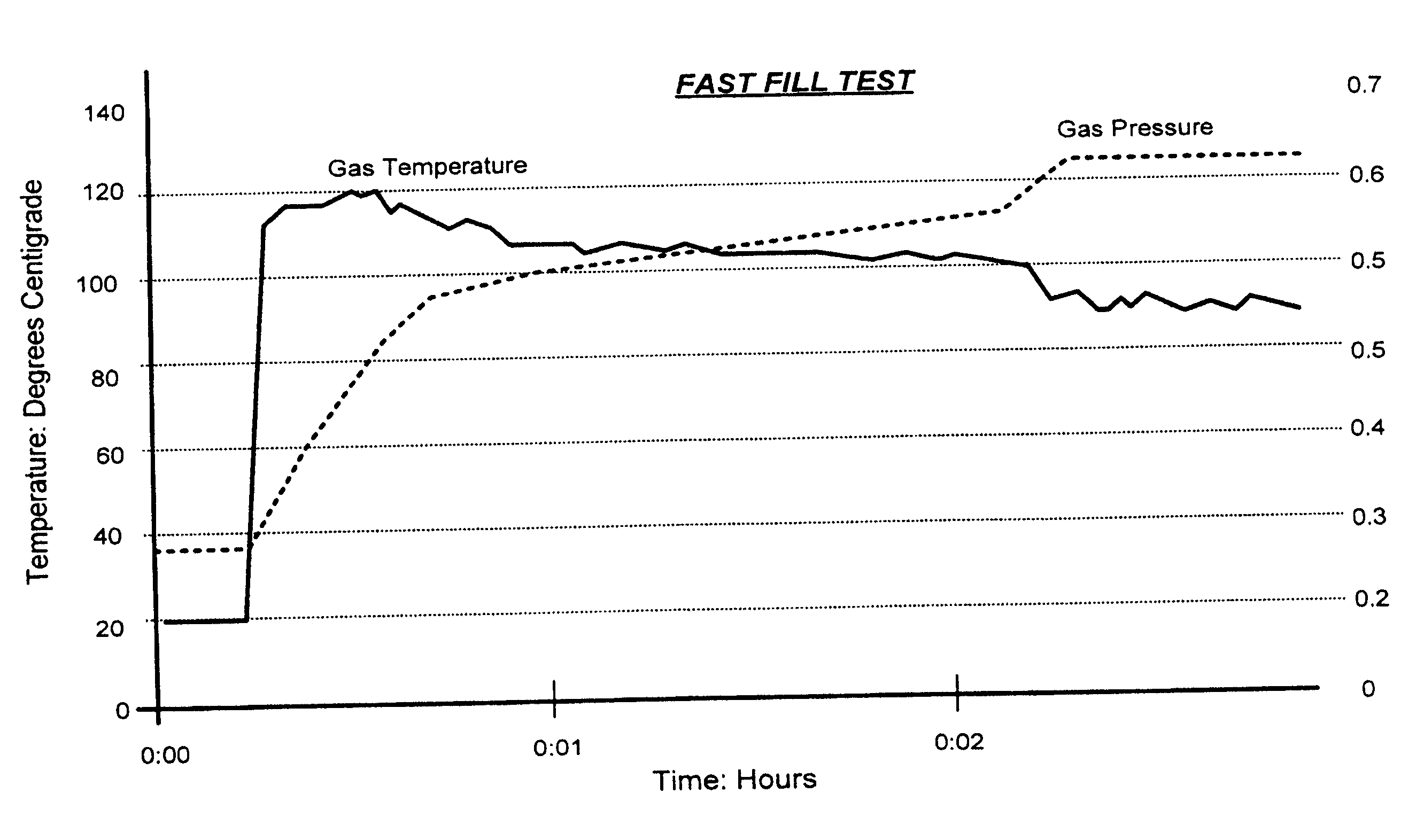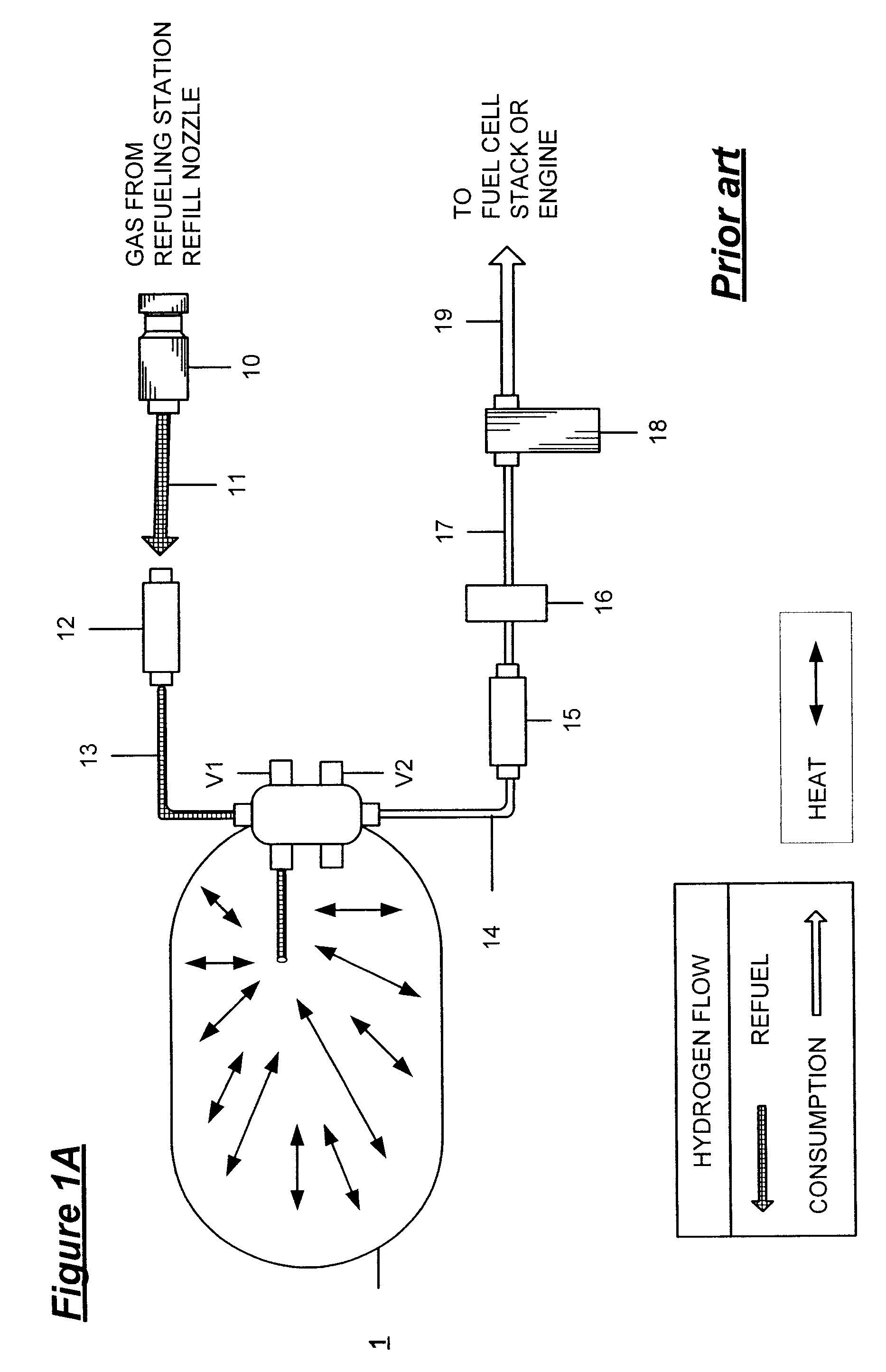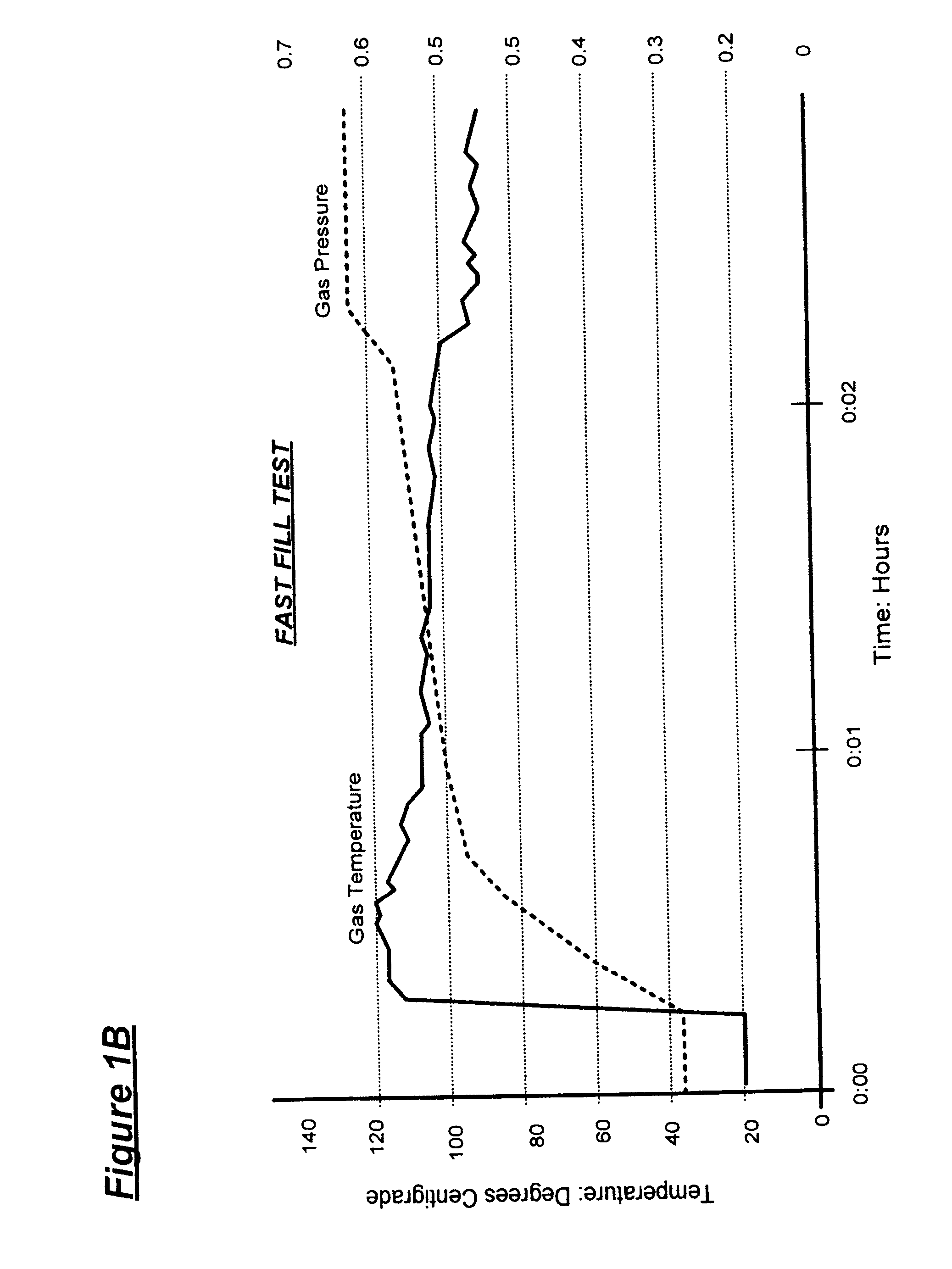System for Enhancing the Efficiency of High Pressure Storage Tanks for Compressed Natural Gas or Hydrogen
a high-pressure storage tank and efficiency technology, which is applied in the direction of liquid handling, lighting and heating apparatus, packaging goods types, etc., can solve the problems of reducing the overall energy efficiency of the hydrogen economy, reducing the initial tank temperature, and not being able to achieve the full refill tank pressure to the maximum high-pressure design maximum, etc., to achieve the effect of reducing energy consumption, reducing the heating of high-pressure gas and tank, and increasing refueling efficiency
- Summary
- Abstract
- Description
- Claims
- Application Information
AI Technical Summary
Benefits of technology
Problems solved by technology
Method used
Image
Examples
Embodiment Construction
[0021] The system of the invention increases the refueling energy efficiency of hydrogen powered vehicles by withdrawing the heat of refilling compression from the high pressure gas introduced into on board tanks and by eliminating the need for a slow fill, a pressure overfill and / or refueling station precooling of the gas. Less energy is required to completely refill on board vehicle tanks at a refueling depot. The invention reduces the energy required to recharge the on board vehicle tanks with high pressure gas at the station to return the tanks to a full optimal state in the process of refueling. As a result, overall infrastructure energy requirements are reduced, vehicle mileage range is increased, reducing the need for short interval refills, and enhancing consumer satisfaction. The energy and time required to refill on board tanks on a vehicle from a high pressure fuel depot refilling line is reduced by the invention. A cooling circuit coil is disposed within the on board tan...
PUM
| Property | Measurement | Unit |
|---|---|---|
| pressure | aaaaa | aaaaa |
| pressure | aaaaa | aaaaa |
| fill pressures | aaaaa | aaaaa |
Abstract
Description
Claims
Application Information
 Login to View More
Login to View More - R&D
- Intellectual Property
- Life Sciences
- Materials
- Tech Scout
- Unparalleled Data Quality
- Higher Quality Content
- 60% Fewer Hallucinations
Browse by: Latest US Patents, China's latest patents, Technical Efficacy Thesaurus, Application Domain, Technology Topic, Popular Technical Reports.
© 2025 PatSnap. All rights reserved.Legal|Privacy policy|Modern Slavery Act Transparency Statement|Sitemap|About US| Contact US: help@patsnap.com



